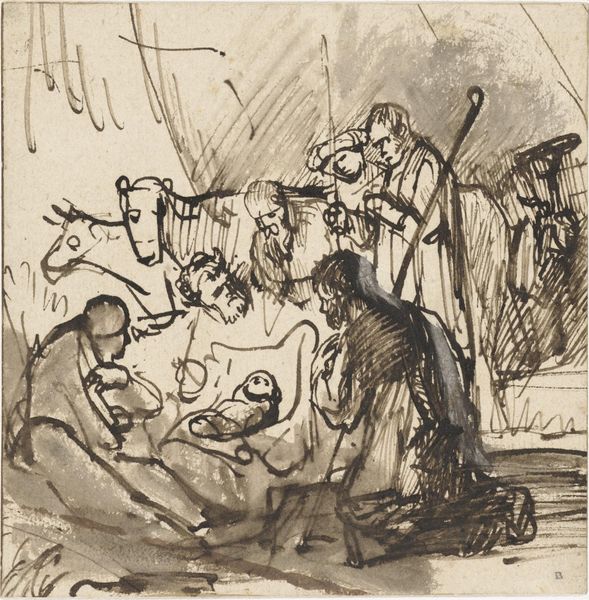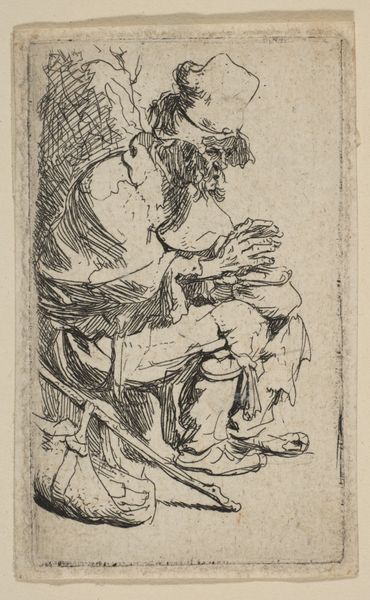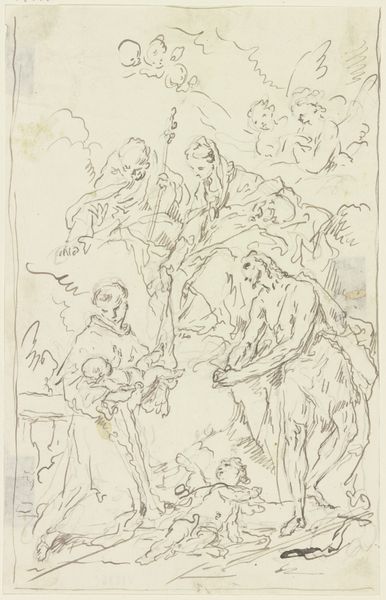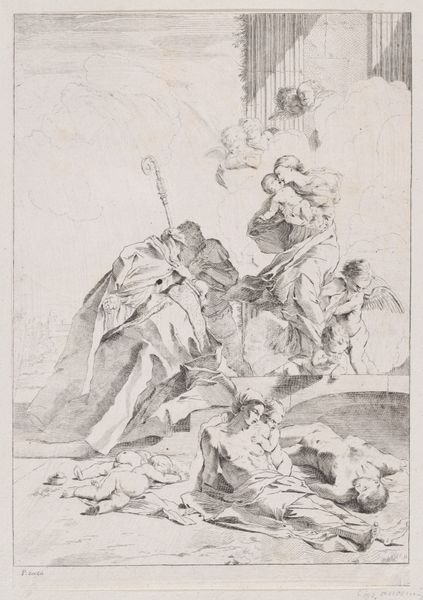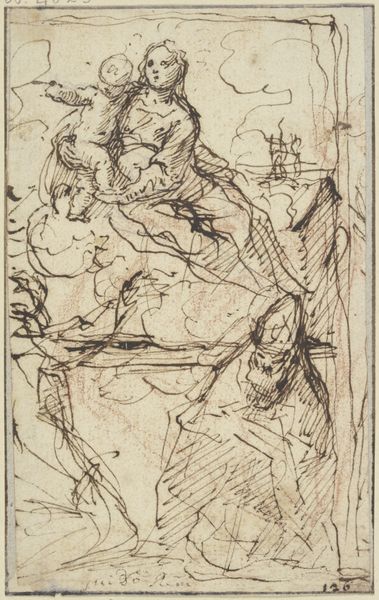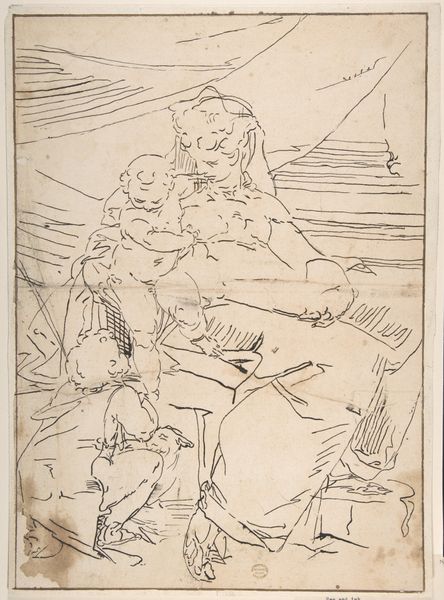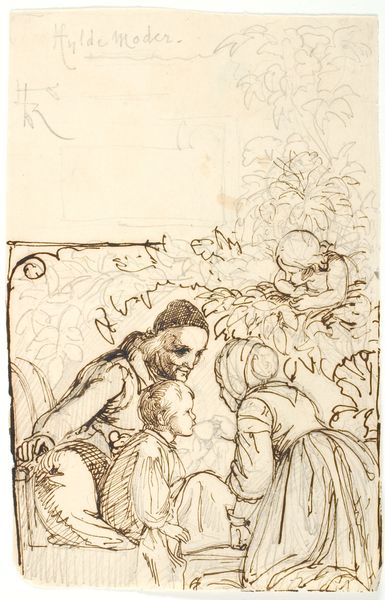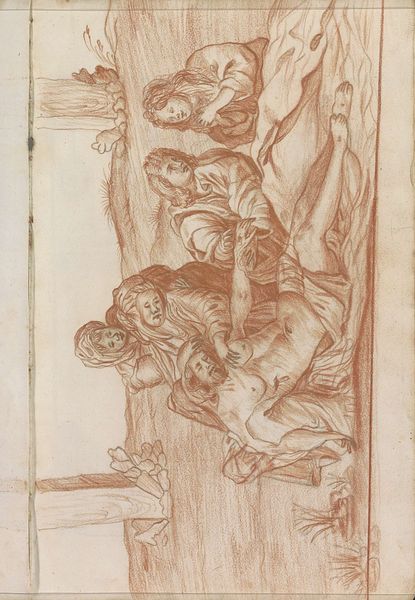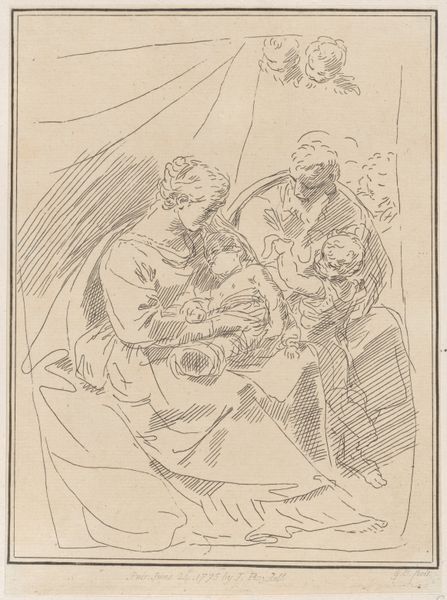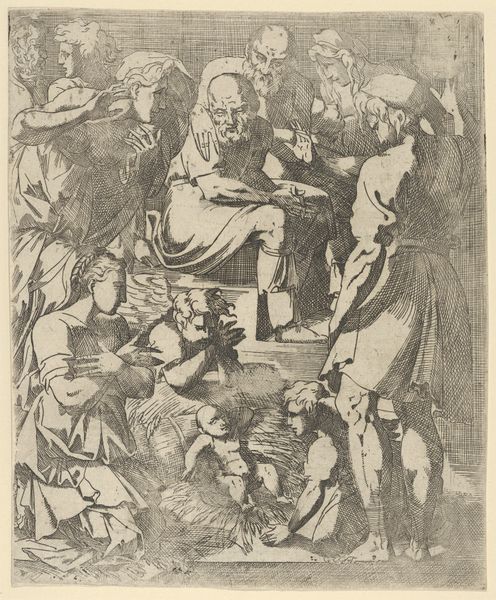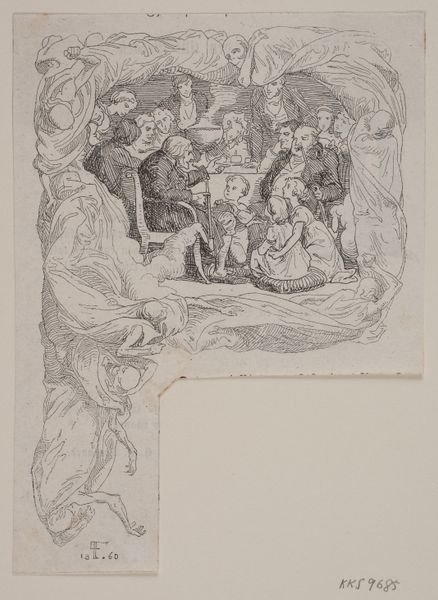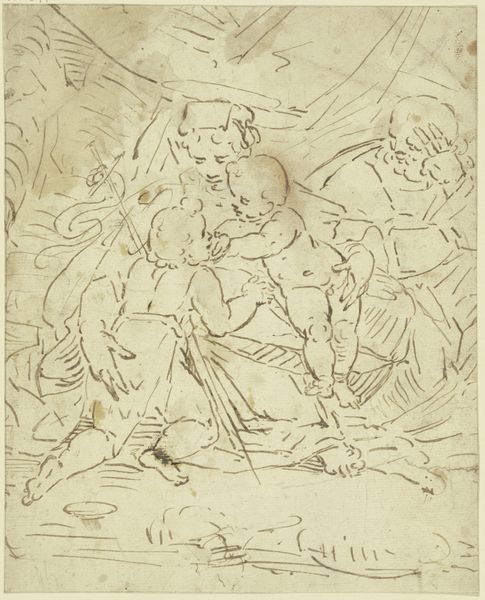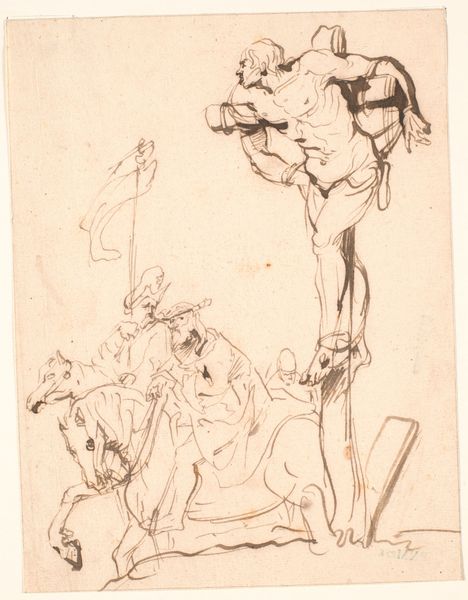
drawing, print, etching, ink
#
drawing
#
narrative-art
#
baroque
# print
#
etching
#
figuration
#
ink
Dimensions: plate: 13 1/16 x 8 9/16 in. (33.2 x 21.7 cm) sheet: 13 1/8 x 8 5/8 in. (33.4 x 21.9 cm)
Copyright: Public Domain
Curator: Here we have "The Adoration of the Virgin and Christ Child," a Baroque-style piece created sometime between 1700 and 1800. The anonymous artist employed etching and ink to bring this narrative to life. Editor: It's surprisingly raw, isn't it? The lines feel so immediate, almost like a sketch. I'm drawn to the energy in the composition. Curator: Indeed. The etching technique allows for this incredible dynamism. And the theme, adoration, has always been politically loaded, defining social roles around religious authority. Who gets to adore and who is adored? Editor: Right, but look at how the materials serve the narrative. The thin, delicate lines create a sense of fragility, especially in the figures of the children. The materiality enhances that vulnerable state. Curator: But think about who this image would circulate amongst. Printmaking in this period served a didactic function. Images such as these solidified hierarchies, making faith more accessible, manageable. Editor: I'm not disagreeing, but focusing on the technical aspect for a moment, see how the artist uses shadow, created solely through density of line, to define form, the three dimensionality of the folds in Mary's robes, the soft flesh of the Christ Child? Curator: Of course, we need to understand this within the framework of its time. The Baroque period favored grand, dramatic displays, and this print reflects that ethos but, significantly, rendered through a reproducible, and thus more accessible medium. Editor: So, despite the fine lines, there's a tension here—a mass-producible devotional image of the divine family that’s executed with remarkable expressiveness in ink and etching. It hints at both accessible spirituality and the hand of a skilled craftsperson. Curator: Exactly. It is the means of dissemination that made it truly powerful, shaping religious consciousness through widespread visual rhetoric. Editor: The materials and the technique themselves play a central role in democratizing the religious narrative, shaping access and engaging new audiences through reproduction. I find that aspect the most engaging part of the image. Curator: Ultimately, viewing this through either lens gives us new ways of approaching this piece and understanding both its period and the continuing influence of imagery on social history.
Comments
No comments
Be the first to comment and join the conversation on the ultimate creative platform.
